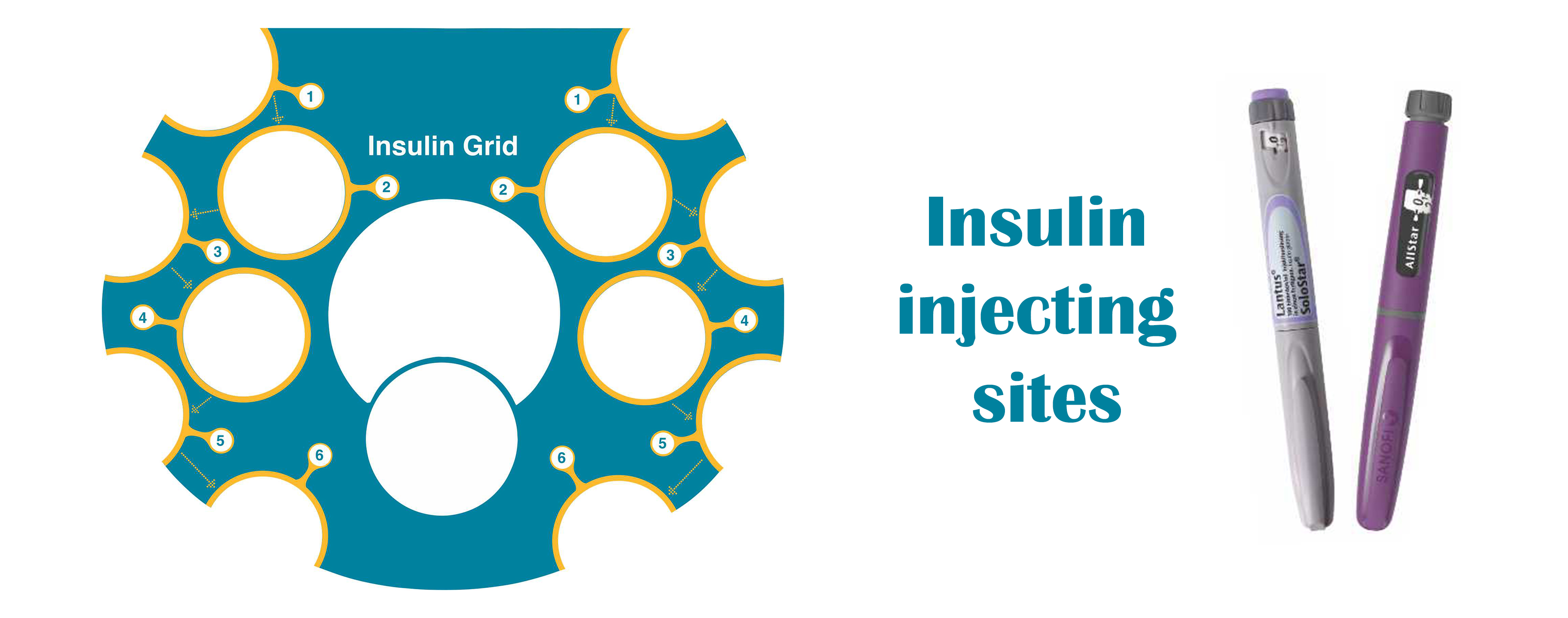Insulin Injection
Insulin is not absorbed the same in all the sites of injection. The site of injection plays a major role in the insulin showing its effectiveness.
People injecting insulin for more than three times a day should rotate their injection sites. Injecting in the same place much of the time can cause hard lumps or extra fat deposits to develop. These lumps are not only unsightly; they can also change the way insulin is absorbed, making it more difficult to keep your blood glucose on target.
Rotation is injecting in the similar site of the body, keeping the injection site about an inch apart.
Injection sites include:
Abdomen
It is the most effective area for absorption. Select a site between the navel and public are, pinch up the skin and inject.
Thigh
Inject into the top and outer areas of your thigh, about 4 inches down from the top of your leg and 4 inches up from your knee.
Arm
Use the fatty area on the back of your arm, between your shoulder and elbow
Insulin is absorbed at different speeds depending on where you inject, so it’s best to consistently use the same part of the body for each of your daily injections. For example, do not inject your lunch bolus dose in the abdomen on Monday and in the thigh on Tuesday. If you have picked the thigh for your evening injection, then continue to use the thigh for all of your evening injections.
On the other hand, your supper or bedtime dose of long-acting insulin could be injected into the thigh, buttocks, or upper arm. That’s because you want the long-acting insulin to take effect gradually and cover your needs throughout the night.
If you mix two types of insulin in one shot, you can inject into the abdomen, arm, thigh, or buttocks.
For most effective results, Work with your doctor and track your blood glucose levels carefully when you begin practicing site rotation.











